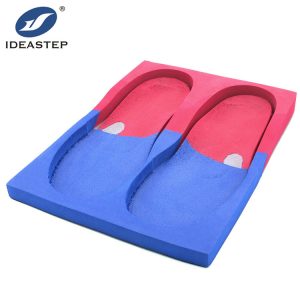
The choice of material for customized orthotic insoles depends on the individual’s specific needs, foot condition, and preferences. Here are some commonly used materials for customized orthotic insoles:
1. EVA (Ethylene-Vinyl Acetate)
EVA is a versatile and widely used material known for its cushioning properties. It provides good shock absorption, comfort, and flexibility.
2. Polyurethane
Polyurethane is another popular material that offers durability and excellent shock absorption capabilities. It tends to be more rigid compared to EVA but can be tailored to provide varying levels of support.
3. Carbon fiber
Carbon fiber is a lightweight yet strong material often utilized in high-performance sports orthotics or for individuals who require maximum support while minimizing weight.
4. Cork
Cork is a natural material that molds well to the shape of the foot over time, offering custom contouring and arch support.
5. Memory foam
Memory foam adapts to the shape of an individual’s foot through body heat and pressure, providing personalized cushioning and comfort.
6. Thermoplastic materials
Some thermoplastic materials like polypropylene or nylon offer rigidity while still being moldable when heated; they can be shaped precisely according to an individual’s foot contours.
It’s important to note that there isn’t one “best” material as each has its own advantages based on factors such as desired level of support, cushioning requirements, activity level, weight distribution needs, etc. Consulting with a healthcare professional or podiatrist will help determine which material would work best for your specific case.
More information for custom orthotics: https://www.aideastep.com/custom-orthotic/.
Hot blogs:
The Easiest Custom Insoles: Heat Moldable Insoles
Custom insoles, also known as orthotic insoles, are designed to provide personalized support and comfort for individuals with various foot conditions. In [...]
Children’s Insole Size Conversion Chart
The standard sizes for shoe insoles may vary from country to country, making it a headache to choose the right insole for [...]
Do custom orthotics need to be made by a doctor personally?
Custom orthotics do not necessarily need to be made by a doctor personally. While doctors, specifically podiatrists or orthopedic specialists, are often [...]
Do NBA players use custom insoles?
Custom insoles are not only helpful for people with foot health issues, but they also play a significant role in targeting the [...]
